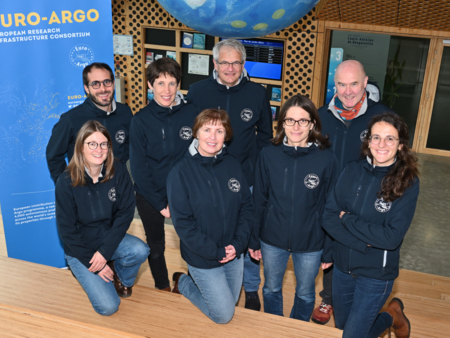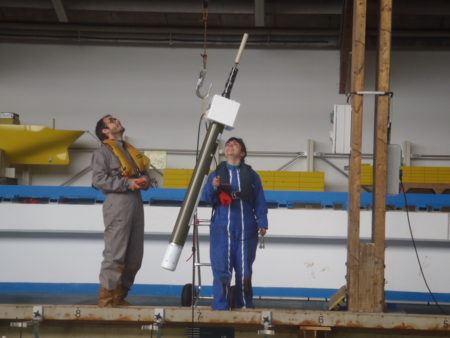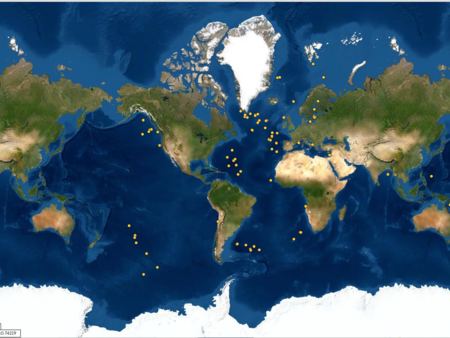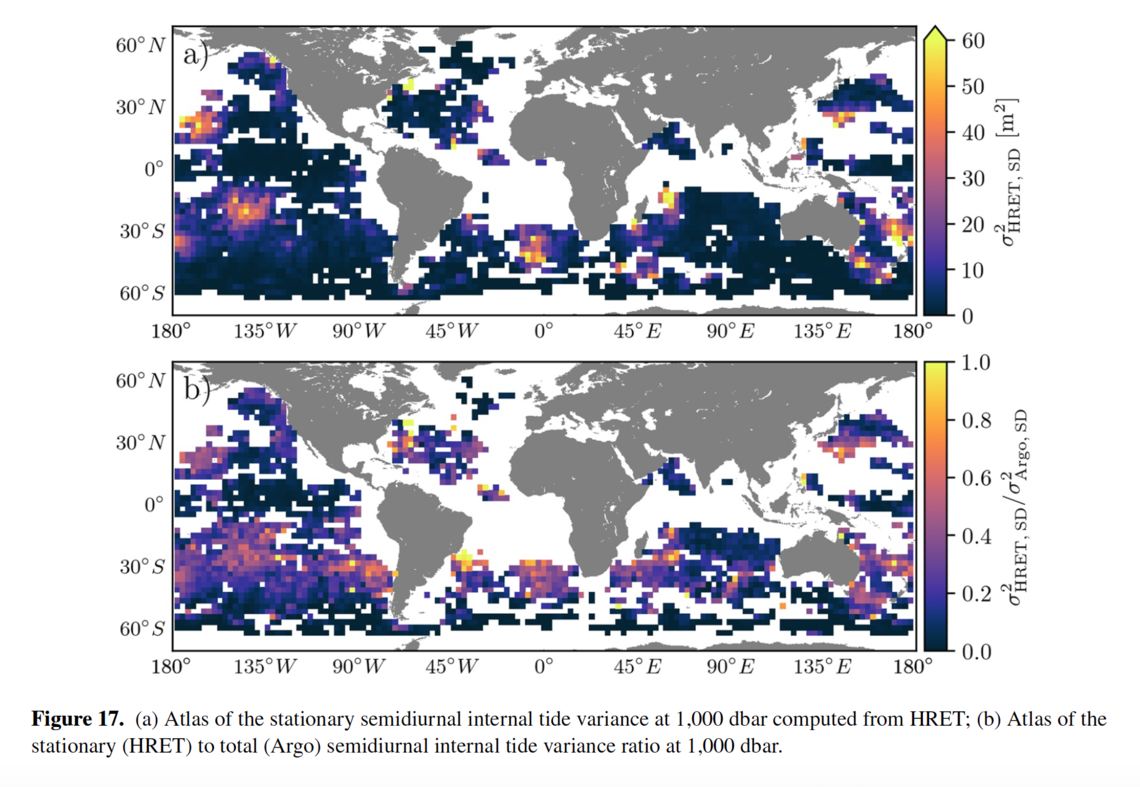April
Read this study to understand how the Argo floats dataset can be used to study the total amplitude of internal tides, and their role in the global climate system as a major provider of vertical mixing in the ocean.
"Global Mapping of the Nonstationary Semidiurnal Internal Tide Using Argo Data"
Journal of Geophysical Research: Oceans, 127, e2021JC018283.
Internal tides are internal waves generated by the barotropic tide. As they propagate, they are affected by the eddying general circulation. This causes the waves to decorrelate: their phase shifts and is no longer locked to the phase of the generating force. Satellite altimetry can only measure the stationary wavefield, that is, the component phase locked to the exactly known astronomical forcing. The total amplitude is therefore poorly known. Here, we describe the total internal tide field using a global collection of autonomous floats recording data as they freely drift at 1,000 m below the surface. By comparing these data to a satellite altimetry product, we find that the nonstationary fraction of the semidiurnal internal tide is significantly larger than commonly thought. Quantifying the nonstationary internal tides is crucial for a better understanding of the abyssal circulation, and therefore of the global climate system.








